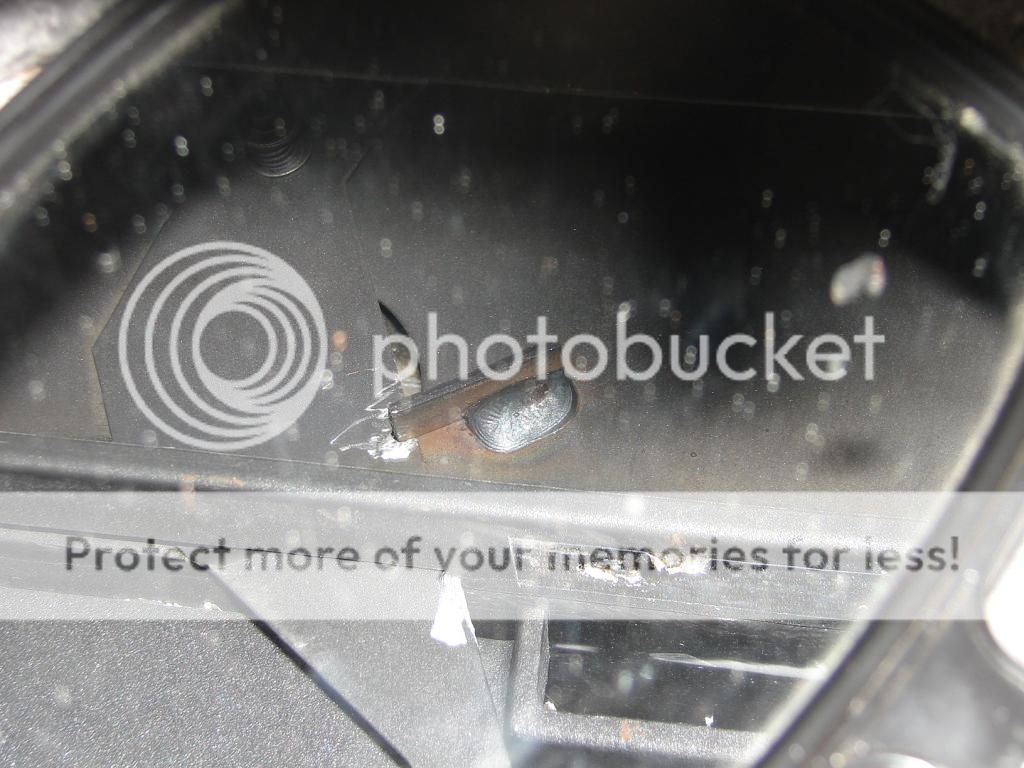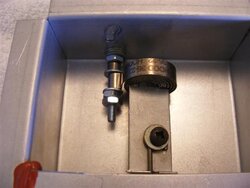I was Here: https://www.hearth.com/talk/threads/pe-pacific-insert-not-bullet-proof.37956/ and spent quite a few hours happily absorbing it. I posted the following without much hope that anyone would notice but begreen was kind enough to advise me to start a new thread with a copy/paste so here it is. I am new to this so hope I have done it appropriately:
I spent most of Christmas eve 2012, reading this thread, https://www.hearth.com/talk/threads/pe-pacific-insert-not-bullet-proof.37956/page-16, and found it most informative. I too have a 2008 Summit Insert ("Packed with care" slip dated 10/21/08, QC checklist dated 12/09/08) with cracks. Don't know if this thread just dropped dead December 3, 2009 or has been moved elsewhere. If anyone is reading this who knows where it went I would really appreciate some guidance.
I noticed cracks along the edges of the seam welds, top and front, of the right side panel of the firebox about a year ago while fiddling with the fan. They did not seem to hurt anything but I mentioned them at Fireplace Warehouse while I was there buying a gasket. They immediately said "Lifetime Warranty" but I did not pursue it because the cracks were minor and removal would be messy and a whole lot of work. Among other things 12' of Persolite insulated chimney liner would need to be removed after dismantling 13" of class A pipe from above the chimney. I was only here about six weeks last winter and successfully made a lot of heat without problems. This year I reglued the door gasket upon my return to the Great Basin, let it air dry for a day and then fired up a small burn to heat cure the glue per instructions. After several hours of low heat I was dead tired so I packed in a lot of wood, set the air control to about half and went to bed. Woke up in the early morning to a house full of smoke. Apparently the fire smoldered for hours before relighting. Tried to recreate the series of events and eventually thought I saw a wisp of smoke just above the door top hinge. Dismantled the trim side panels and bay top, removed the fan and found emanations from the cracks to have left smoke trails leading towards the fan. Under the right conditions combustion gasses can escape the firebox; not normal, but it does happen. I will be attempting to file a warranty claim with Fireplace Warehouse but do not expect much. I have read that the company folded a couple of years ago and is being operated under the same name/locations on a shoestring budget by new management. They certainly don't get any favorable reviews these days but the people on the floor there have always been helpful and willing, past and present, for me. I will remove the fireplace's innards and inspect the back, top, bottom and interior when the weather gives me a break. Hope I don't find anything more (as of now no externally visible cracks around the door frame top corners) because I really don't want to dismantle, remove, truck 630 miles back to Denver, and then rebuild everything. As it sits I can Vee out the known cracks, preheat the stove with a fire, and stick weld repairs. It would be hard to know where to quit Veeing old weld and rewelding because all of the right side welds look like crap with raised edges along the flat panel side that may be cracks that haven't opened up enough to pass smoke. I went to school for welding on the GI bill, got a few certifications, built a few things and had a lot of fun about forty years ago. Only did incidental welding as part of my job doing heavy vehicle repair but I can still burn in some 7018 rod and get penetration where PE did not - IF I can get to all of the places that need welding.
Now on to my questions! Why did this happen and what to do about it? Obviously inferior welds and poor design (90* corners everywhere) are the root causes but I think the stresses generated by high operating temperatures lead to failures in a poorly constructed firebox. My complaint is that operating temperatures are not fully under my control because the EBT valve opens when the box gets hot. I had noticed and not liked this on several occasions previously because the stove makes more heat than I want and rapidly burns what I had hoped to be a full nights fuel. Last night as I sat reading this thread this recurred: I had a nice fire actively burning but getting low on wood so I added about four big splits and immediately returned the air control to minimum. The new fuel lit in seconds and proceeded to burn vigorously for about two hours. I stayed up and observed the stove while reading several more pages of this thread. The intense heat warmed the living room and kitchen of my 12x60 beercan to 89* in those two hours. I listened with new appreciation to the loud pings, pops and bangs coming from the cracked steel box. I was searching for information about modifying the EBT valve when I found this thread. I examined the works of the EBT and tested its function with a heat gun prior to installing the insert and it was functioning correctly. Several people have mentioned the undesirable aspects of the EBT's operation, i.e. adding air when the fire is already hot, and at least one has disabled it. I want to modify it to be open, adding air, on cold start, close as efficient heating temperatures are reached, then reopen on cool down to get a little more heat while reducing the pile of coals. I am reasonably sure I can do this by reversing the location of the valve L and adding a screw to the back of the L changing its center of balance causing it to tip to a normally open position. The now divorced thermostatically driven operating crank would be reconnected to the L with a short piece of light chain. When the crank rotated in response to elevated temperatures it would pull the L to a vertical/shut position thus damping the fire while I sleep. Has anyone done anything like this? Getting at the EBT underneath my Summit Insert is going to be groan and I would like to do it only once so other's knowledge would be very helpful.
Slightly different subject; had a problem with the Boost Manifold plate warping in a upward bow about 3/8" as soon as I started using the furnace. Brought it back to Denver and showed it to the folks at Fireplace Warehouse. Immediate response "overfired". I didn't think so but did not want to get into a fight so I just straightened it in a press (very easy, soft stainless steel) and reused. Warped again next decent fire I built. Considered the material, shape of the part, and installation location. After straightening a second time I shortened the manifold about 1/16" and reinstalled. No further problems. I was very interested to read a poster recount this exact problem and cure as told to him by PE. Sure wish I had read that they found the cause of cracked fireboxes and fixed it before they made mine!
If anyone has read my tale of woe this far there must still be a spark of interest and I would really appreciate any insight or further history of PE's warranty performance regarding cracks and possible EBT valve modifications.
I spent most of Christmas eve 2012, reading this thread, https://www.hearth.com/talk/threads/pe-pacific-insert-not-bullet-proof.37956/page-16, and found it most informative. I too have a 2008 Summit Insert ("Packed with care" slip dated 10/21/08, QC checklist dated 12/09/08) with cracks. Don't know if this thread just dropped dead December 3, 2009 or has been moved elsewhere. If anyone is reading this who knows where it went I would really appreciate some guidance.
I noticed cracks along the edges of the seam welds, top and front, of the right side panel of the firebox about a year ago while fiddling with the fan. They did not seem to hurt anything but I mentioned them at Fireplace Warehouse while I was there buying a gasket. They immediately said "Lifetime Warranty" but I did not pursue it because the cracks were minor and removal would be messy and a whole lot of work. Among other things 12' of Persolite insulated chimney liner would need to be removed after dismantling 13" of class A pipe from above the chimney. I was only here about six weeks last winter and successfully made a lot of heat without problems. This year I reglued the door gasket upon my return to the Great Basin, let it air dry for a day and then fired up a small burn to heat cure the glue per instructions. After several hours of low heat I was dead tired so I packed in a lot of wood, set the air control to about half and went to bed. Woke up in the early morning to a house full of smoke. Apparently the fire smoldered for hours before relighting. Tried to recreate the series of events and eventually thought I saw a wisp of smoke just above the door top hinge. Dismantled the trim side panels and bay top, removed the fan and found emanations from the cracks to have left smoke trails leading towards the fan. Under the right conditions combustion gasses can escape the firebox; not normal, but it does happen. I will be attempting to file a warranty claim with Fireplace Warehouse but do not expect much. I have read that the company folded a couple of years ago and is being operated under the same name/locations on a shoestring budget by new management. They certainly don't get any favorable reviews these days but the people on the floor there have always been helpful and willing, past and present, for me. I will remove the fireplace's innards and inspect the back, top, bottom and interior when the weather gives me a break. Hope I don't find anything more (as of now no externally visible cracks around the door frame top corners) because I really don't want to dismantle, remove, truck 630 miles back to Denver, and then rebuild everything. As it sits I can Vee out the known cracks, preheat the stove with a fire, and stick weld repairs. It would be hard to know where to quit Veeing old weld and rewelding because all of the right side welds look like crap with raised edges along the flat panel side that may be cracks that haven't opened up enough to pass smoke. I went to school for welding on the GI bill, got a few certifications, built a few things and had a lot of fun about forty years ago. Only did incidental welding as part of my job doing heavy vehicle repair but I can still burn in some 7018 rod and get penetration where PE did not - IF I can get to all of the places that need welding.
Now on to my questions! Why did this happen and what to do about it? Obviously inferior welds and poor design (90* corners everywhere) are the root causes but I think the stresses generated by high operating temperatures lead to failures in a poorly constructed firebox. My complaint is that operating temperatures are not fully under my control because the EBT valve opens when the box gets hot. I had noticed and not liked this on several occasions previously because the stove makes more heat than I want and rapidly burns what I had hoped to be a full nights fuel. Last night as I sat reading this thread this recurred: I had a nice fire actively burning but getting low on wood so I added about four big splits and immediately returned the air control to minimum. The new fuel lit in seconds and proceeded to burn vigorously for about two hours. I stayed up and observed the stove while reading several more pages of this thread. The intense heat warmed the living room and kitchen of my 12x60 beercan to 89* in those two hours. I listened with new appreciation to the loud pings, pops and bangs coming from the cracked steel box. I was searching for information about modifying the EBT valve when I found this thread. I examined the works of the EBT and tested its function with a heat gun prior to installing the insert and it was functioning correctly. Several people have mentioned the undesirable aspects of the EBT's operation, i.e. adding air when the fire is already hot, and at least one has disabled it. I want to modify it to be open, adding air, on cold start, close as efficient heating temperatures are reached, then reopen on cool down to get a little more heat while reducing the pile of coals. I am reasonably sure I can do this by reversing the location of the valve L and adding a screw to the back of the L changing its center of balance causing it to tip to a normally open position. The now divorced thermostatically driven operating crank would be reconnected to the L with a short piece of light chain. When the crank rotated in response to elevated temperatures it would pull the L to a vertical/shut position thus damping the fire while I sleep. Has anyone done anything like this? Getting at the EBT underneath my Summit Insert is going to be groan and I would like to do it only once so other's knowledge would be very helpful.
Slightly different subject; had a problem with the Boost Manifold plate warping in a upward bow about 3/8" as soon as I started using the furnace. Brought it back to Denver and showed it to the folks at Fireplace Warehouse. Immediate response "overfired". I didn't think so but did not want to get into a fight so I just straightened it in a press (very easy, soft stainless steel) and reused. Warped again next decent fire I built. Considered the material, shape of the part, and installation location. After straightening a second time I shortened the manifold about 1/16" and reinstalled. No further problems. I was very interested to read a poster recount this exact problem and cure as told to him by PE. Sure wish I had read that they found the cause of cracked fireboxes and fixed it before they made mine!
If anyone has read my tale of woe this far there must still be a spark of interest and I would really appreciate any insight or further history of PE's warranty performance regarding cracks and possible EBT valve modifications.


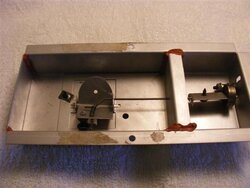
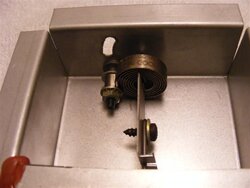
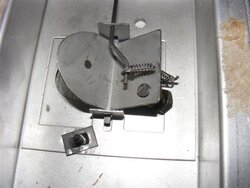
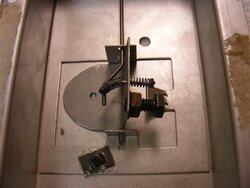
 Maybe change your location to throw them off... Not that they will respond that promptly or anything
Maybe change your location to throw them off... Not that they will respond that promptly or anything
